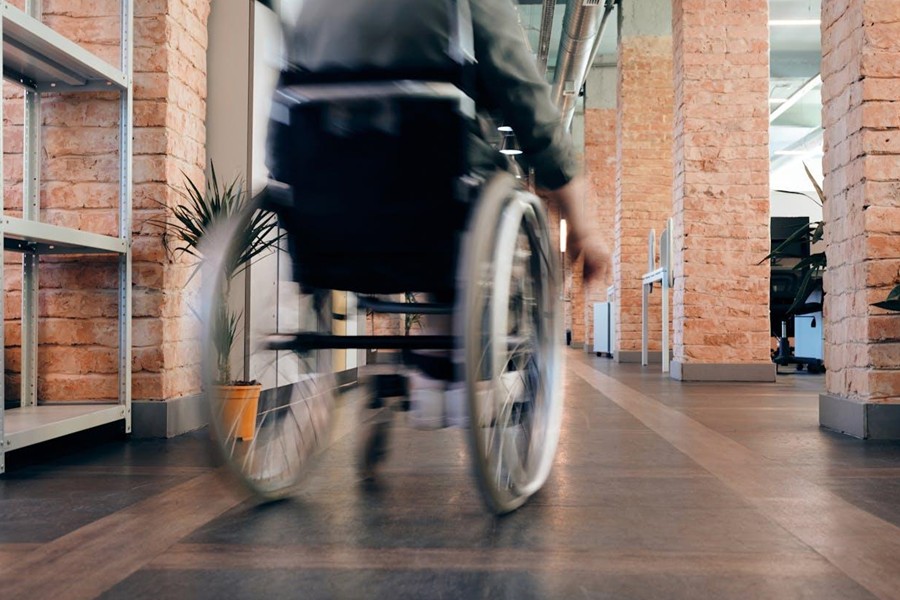 The Health Department today released the 2017 Summary of Vital Statistics, which found that life expectancy in New York City was 81.2 years, a one-year increase since 2008. The age-adjusted premature death (before age 65) rate decreased by 2.4% from 2016. Teen birth rates fell sharply over the past 10 years, with a 56.2% decline among teens less than 20 years of age.
The Health Department today released the 2017 Summary of Vital Statistics, which found that life expectancy in New York City was 81.2 years, a one-year increase since 2008. The age-adjusted premature death (before age 65) rate decreased by 2.4% from 2016. Teen birth rates fell sharply over the past 10 years, with a 56.2% decline among teens less than 20 years of age.
While the lifespan of New Yorkers is increasing, the data show areas of concern. Black New Yorkers still had the shortest life expectancy, at 77.3 years, and people living in very high-poverty neighborhoods had a premature death rate twice as high as people living in low-poverty neighborhoods. Further, while the infant mortality rate was similar to 2016, for non-Hispanic blacks it remained three times higher than the rate for non-Hispanic whites. The Summary of Vital Statistics provides an overview of vital events in New York City. These data are derived from vital event certificates filed with the Bureau of Vital Statistics. Summaries dating to 1961 are available on the Health Department’s website.
“The city’s progress in improving health outcomes continues, but there is much work still to ensure equitable health outcomes for all New Yorkers,” said Health Commissioner Oxiris Barbot. “Closing the racial health equity gap requires closer alignment between public health, health care delivery and sectors that affect health such as housing and the communities we serve.”
Life Expectancy
- New York City’s life expectancy at birth in 2017 was 81.2 years, remaining the same since 2016 and increasing by 1.0 year since 2008.
- The New York City 2017 life expectancy at birth was 82.4 years among Hispanics, 81.3 years among non-Hispanic whites, and 77.3 years among non-Hispanic blacks. From 2016 to 2017, life expectancy increased 0.1 year among non-Hispanic blacks and non-Hispanic whites, and remained the same among Hispanics.
Premature Mortality (death before age 65)
- New York City’s 2017 age-adjusted premature death rate was 184.9 deaths per 100,000 population, a small decrease from 2016 and a 14.9 percent decrease since 2008.
- From 2008 to 2017, age-adjusted premature death rates declined by 14.0% among non-Hispanic blacks, 18.4% among Hispanics, 14.6% among non-Hispanic whites, and increased by 6.7% among Asians and Pacific Islanders. The age-adjusted premature mortality rate decreased across all categories of neighborhood poverty between 2008 and 2017; however, the rate in neighborhoods with very high poverty was 2.1 times the rate in neighborhoods with low poverty in 2017.
- The three leading causes of premature death in 2017 were cancer, heart disease, and drug-related (includes chronic use and unintentional overdose).
Mortality
- The citywide age-adjusted death rate decreased between 2016 and 2017, from 575.4 per 100,000 population to 545.7. Over the past ten years, the age-adjusted death rate decreased by 17.4%.
- From 2016 to 2017, the age-adjusted death rate decreased among Hispanics by 5.2%, among non-Hispanic blacks by 2.7%, among non-Hispanic whites by 6.1%, and among
- Asians and Pacific Islanders by 4.0%.
- Death rates due to all three of the leading causes of death in New York City – heart disease, cancer, and influenza/pneumonia – have declined since 2008. The crude rates are down 20.0%, 1.2%, and 17.8%, respectively.
- The age-adjusted mortality rate in neighborhoods with very high poverty was 1.5 times the rate in neighborhoods with low poverty in 2017, reflecting a consistent disparity – the rate was also 1.5 times as high in 2008.
- Drug-related deaths have remained as the seventh leading cause of death in 2017 since 2016.
Infant Mortality
- In 2017, New York City had an infant mortality rate of 4.3 infant deaths per 1,000 live births, a slight increase since 2016 (4.1 per 1,000 live births). Due to the small number of deaths, the rate fluctuates from year to year.
- The rate for non-Hispanic blacks was 3.3 times that of non-Hispanic whites in 2017.
- From 2008 to 2017, the infant mortality rate declined in all poverty groups: by 12.8% in low poverty areas, by 6.5% in medium poverty areas, by 16.0% in high poverty areas, and by 28.4% for very high poverty areas.
Pregnancy Outcomes
- The 2017 citywide crude birth rate was 13.6 births per 1,000 population. New York City’s birth rate decreased by 3.5% from 2016 and by 13.4% since 2008.
- In 2017, the birth rate was highest among Asians and Pacific Islanders at 15.7 births per 1,000 population, followed by 14.7 among non-Hispanic whites, 13.1 among
- Hispanics, and 11.6 among non-Hispanic blacks.
- From 2008 to 2017, birth rates fell among all teenagers, and the overall rate of teen birth (births to women <20) declined by 56.2%. Among teens less than 18 years of age, the birth rate declined over that period by 65.1%; among women 18-19, it declined by 52.5%.
- The rates of induced and spontaneous terminations of pregnancy both continued to decline from 2016 to 2017, decreasing by 9.3% and 13.7%, respectively.
The goal of OneNYC: The Plan for a Strong and Just City is to ensure that all New Yorkers live a long and healthy life. Premature mortality is closely tied to poverty, which, in New York City correlates with communities of color that have long undergone structural and historical oppression. Under the OneNYC plan, the City has committed to reducing the premature mortality rate by 25 percent by 2040.
Founded in 2014, the Health Department’s Center for Health Equity amplifies the agency’s work to eliminate health disparities and improve health outcomes in neighborhoods with disproportionately high rates of chronic disease and premature death. The Neighborhood Health Action Centers, which opened last month, provide space for primary care clinics, community-based organizations and Health Department staff to work together to advance neighborhood health. For more information on the Center for Health Equity, visit www.nyc.gov/health/CHE.
Take Care New York 2020 champions a community engagement approach, in which community members rank health issues for their neighborhood to focus on and improve.
The Health Department produced Community Health Profiles for every neighborhood in the city, which provided data on and ranked each neighborhood according to 42 diverse, health-related indicators such as obesity rates, new HIV cases, high school graduation rates, and air quality. For more information about Take Care New York 2020, visit nyc.gov/tcny2020.
Become a Harlem Insider!
By submitting this form, you are consenting to receive marketing emails from: . You can revoke your consent to receive emails at any time by using the SafeUnsubscribe® link, found at the bottom of every email. Emails are serviced by Constant Contact








